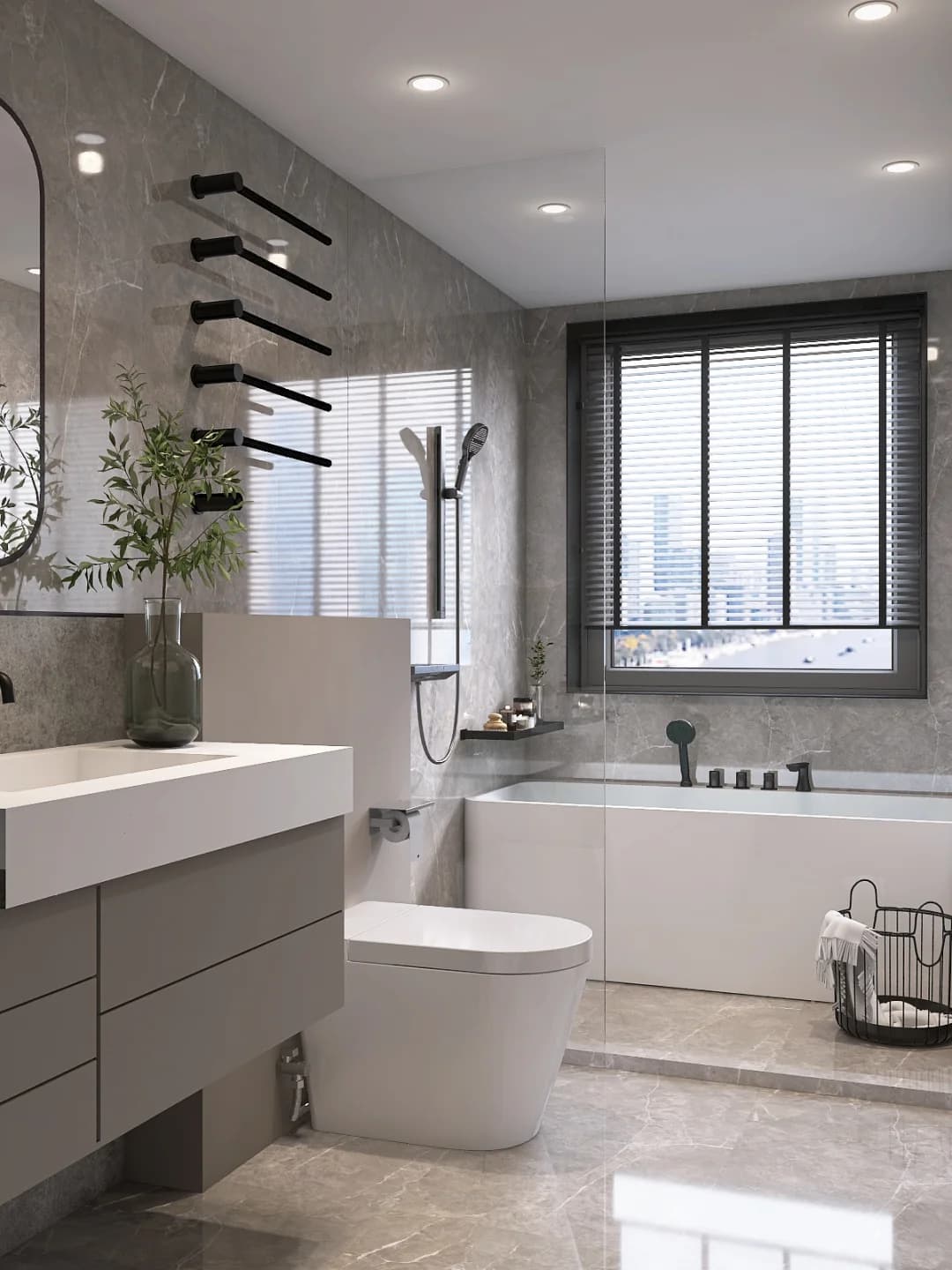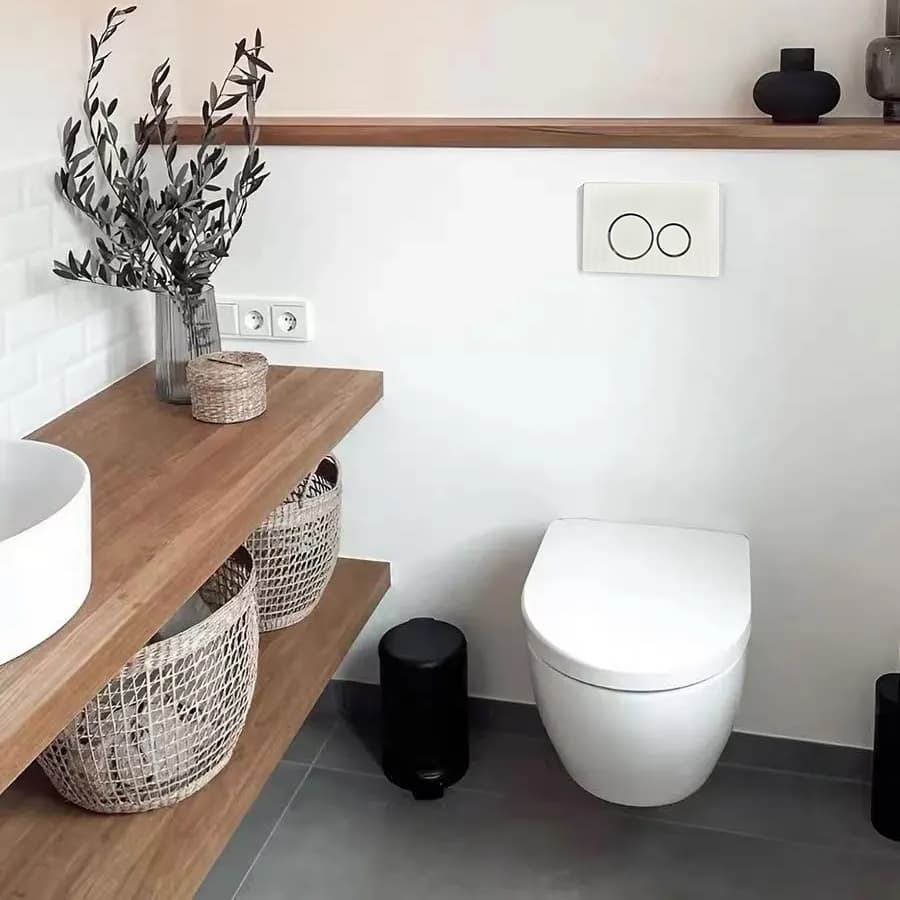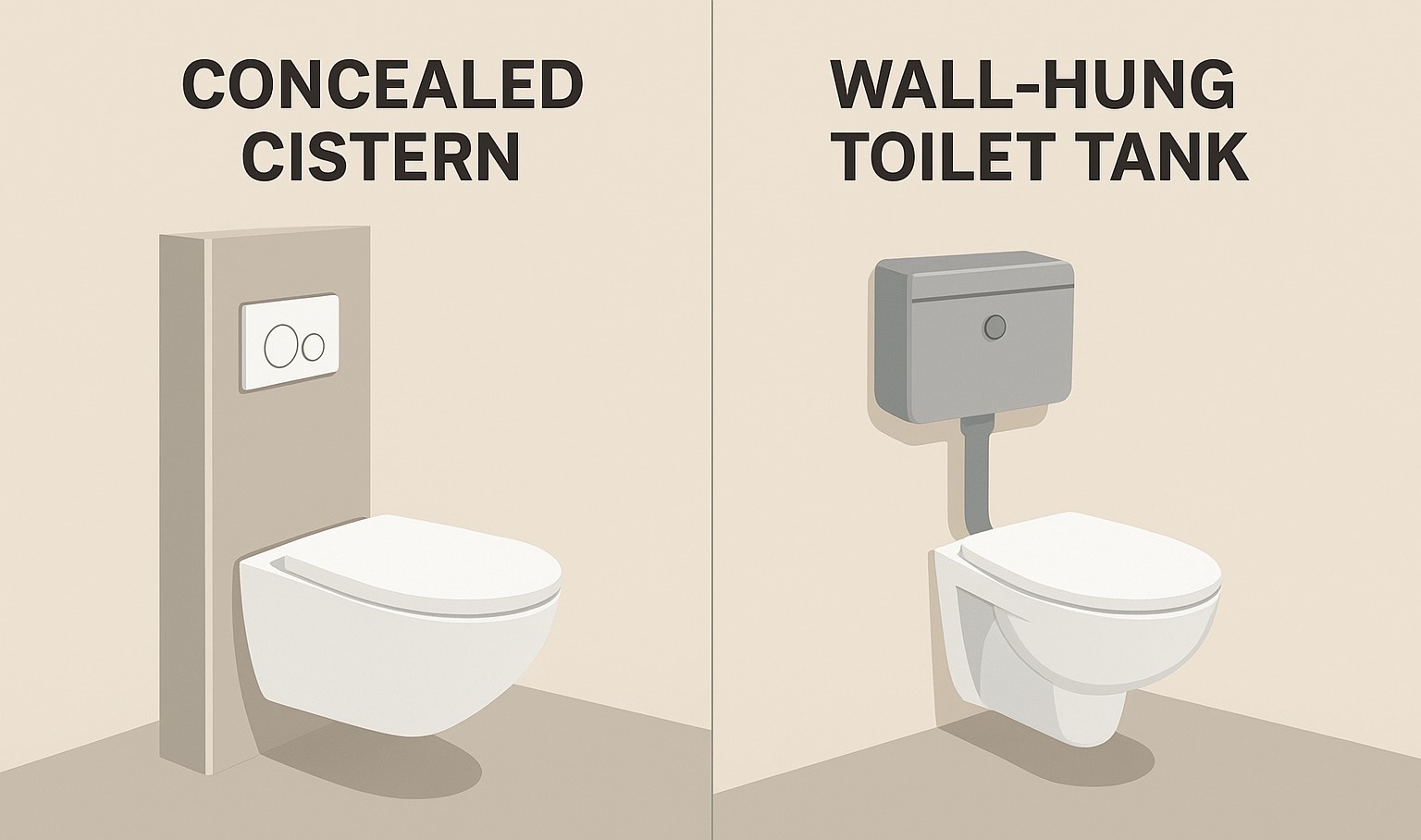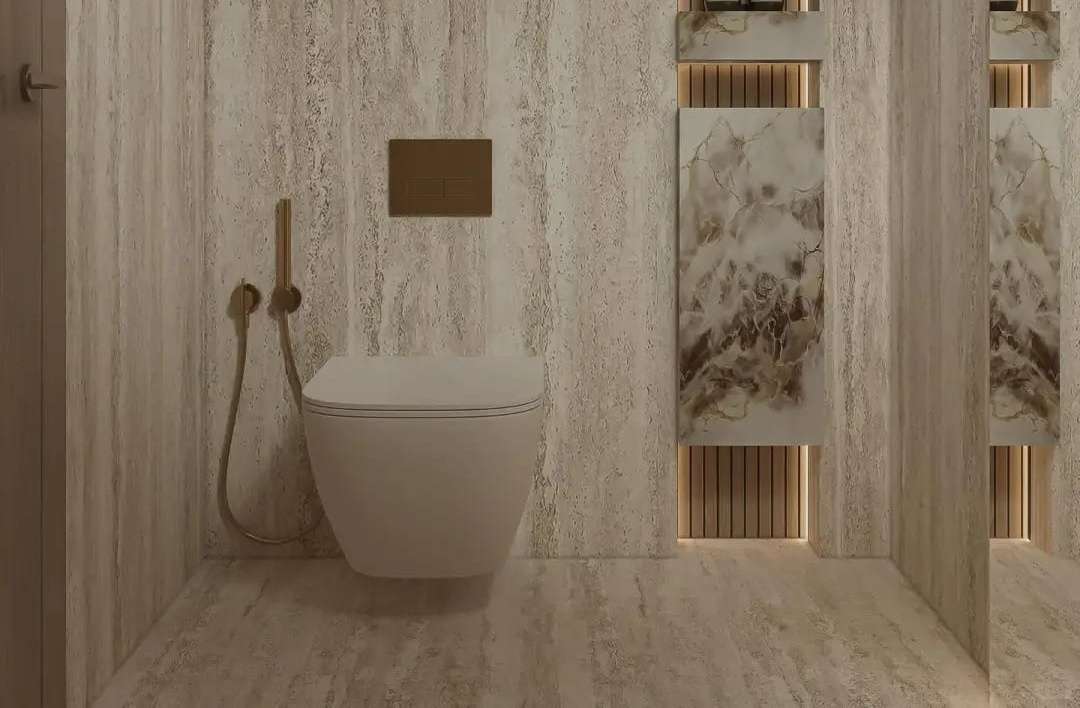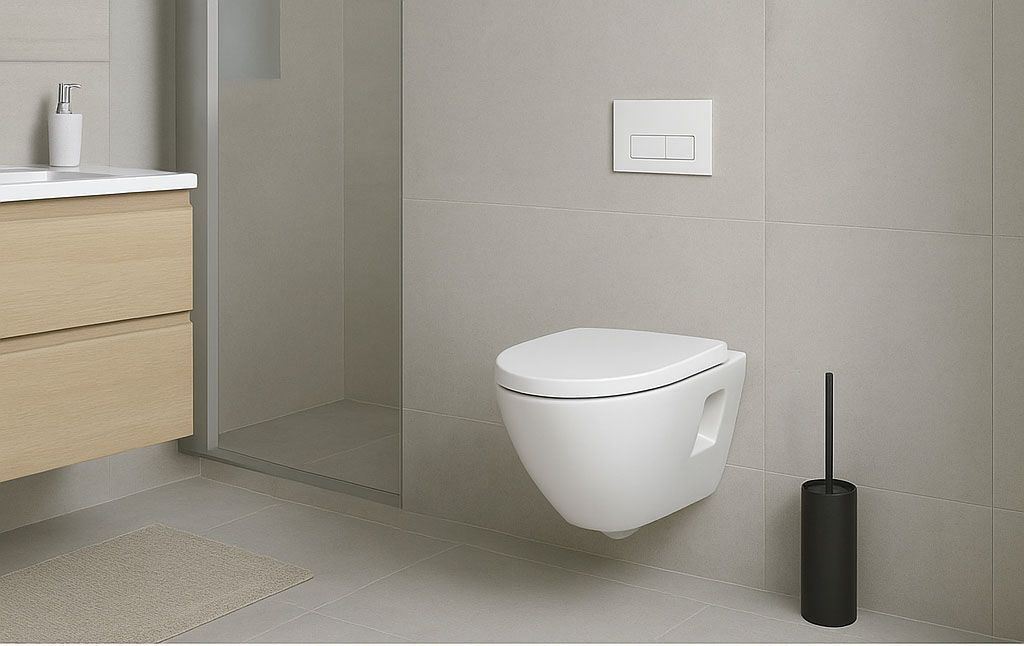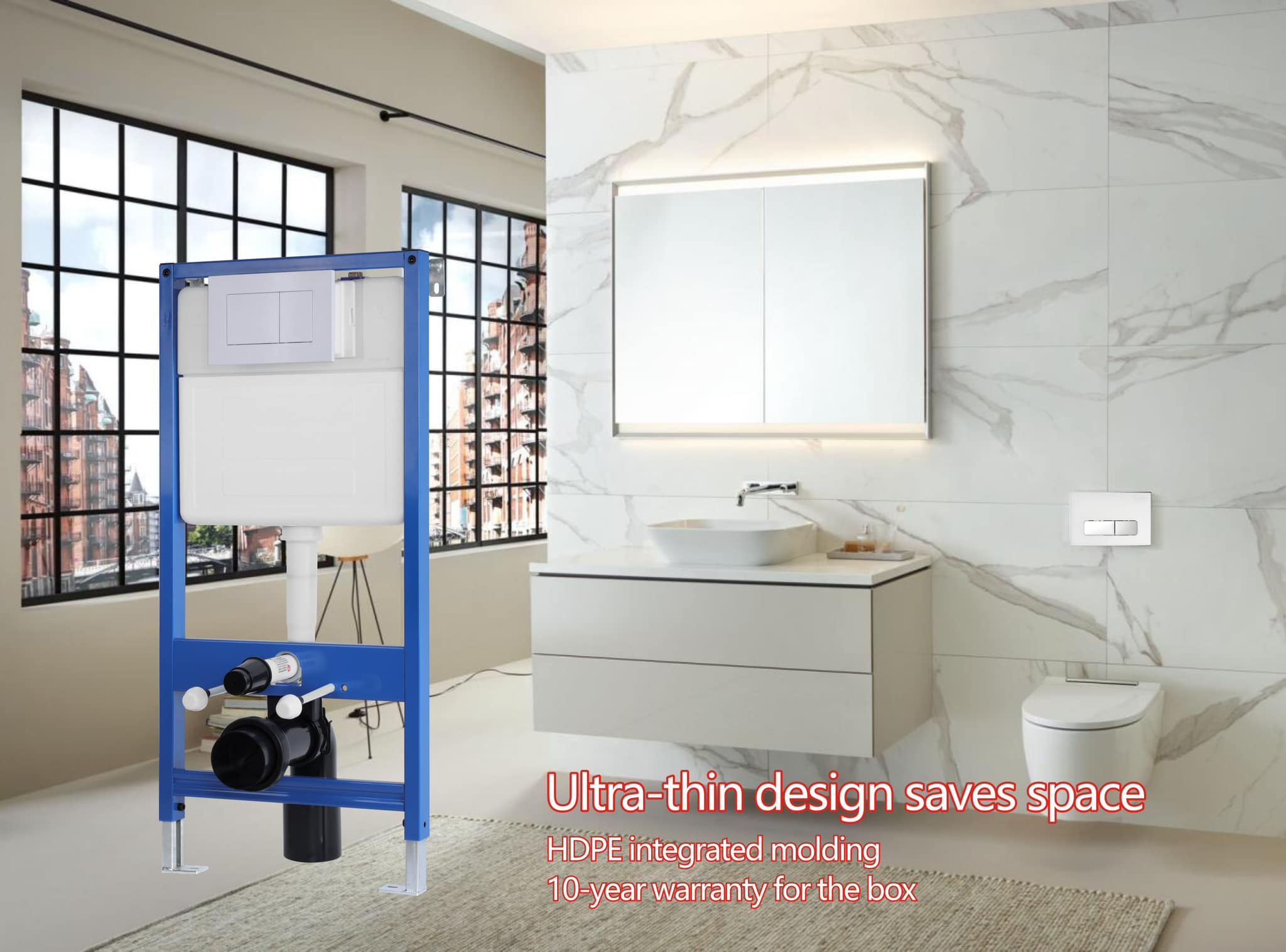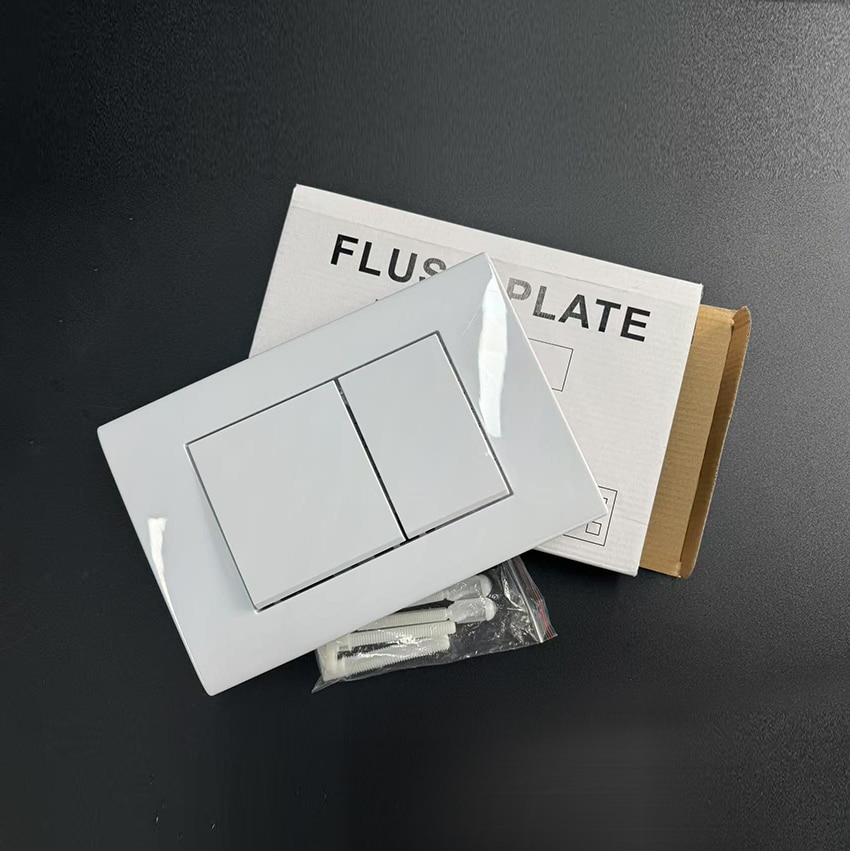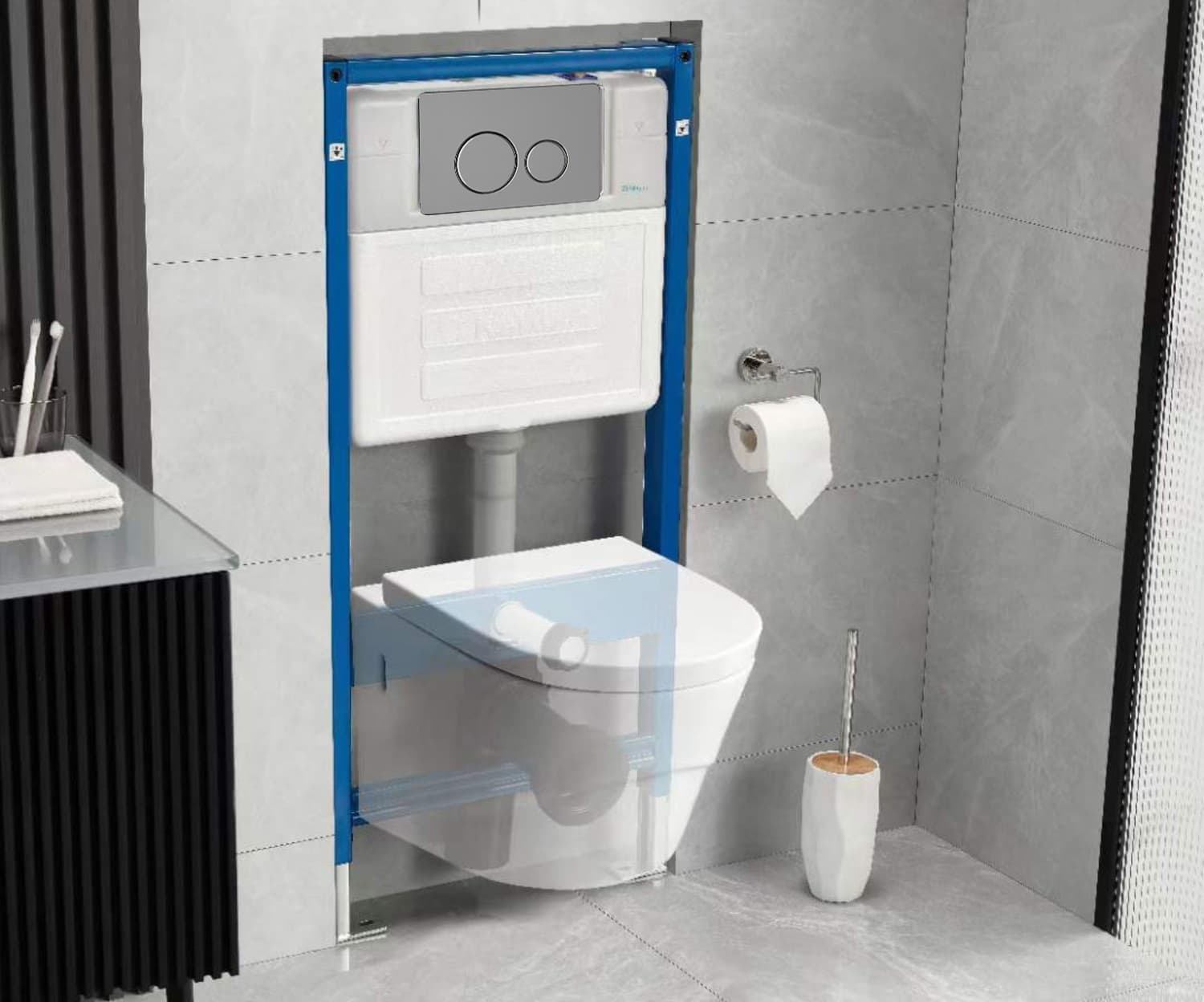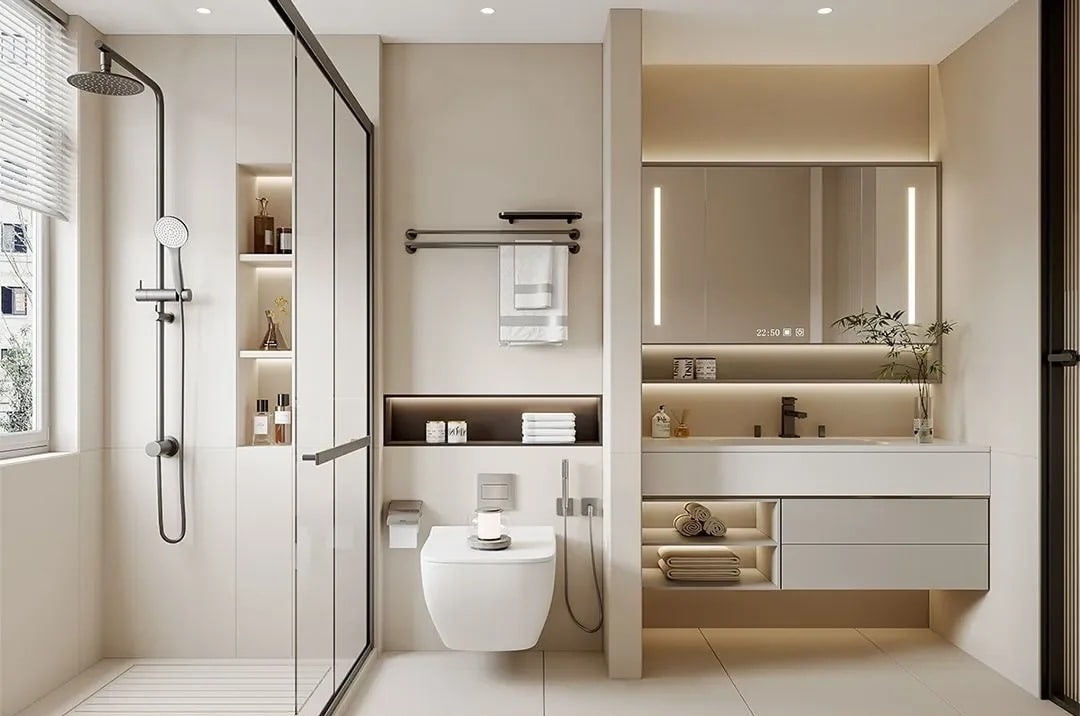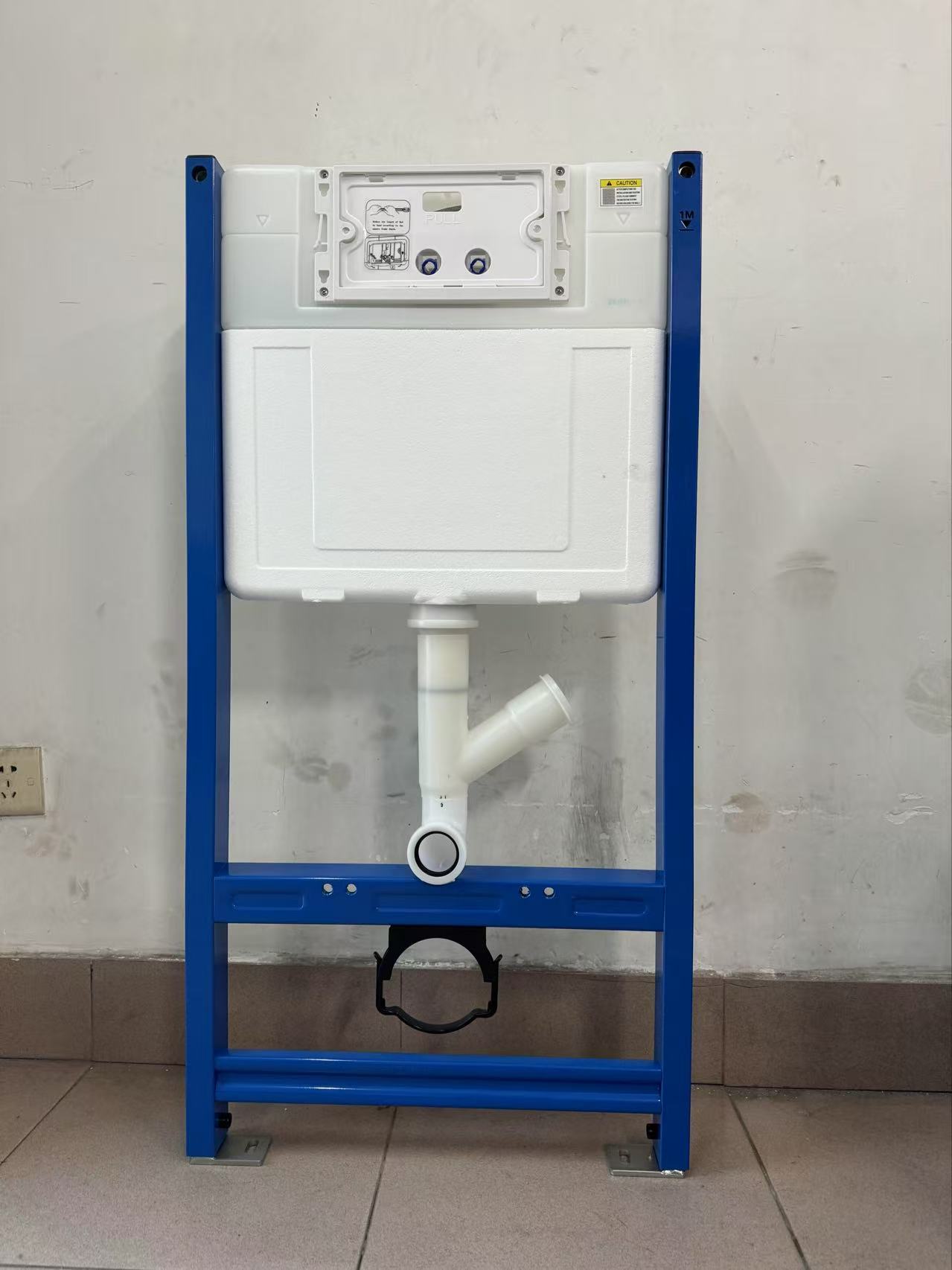The Hidden Battle: Plastic vs. 304 Stainless Steel for Your Concealed Cistern Panel
Jul 01, 2025
So, you've decided to embrace the sleek, minimalist look of a wall-hung toilet with a concealed cistern – smart choice! It saves space, simplifies cleaning, and elevates your bathroom's aesthetics. But now comes the crucial decision: what material should the access panel be? That unassuming rectangle is the only visible part of the whole system, and it needs to be both functional and stylish. The two main contenders are plastic and 304 stainless steel. Let's break down the showdown!
1. Understanding the Basics What is a Concealed Water Tank? A concealed water tank is a plumbing fixture where the tank is hidden within a wall or cabinet, leaving only the flush mechanism and panel visible. This design creates a sleek, minimalist look, popular in modern bathrooms. The panel serves as both a functional access point for maintenance and a decorative element.
304 stainless steel single tank toilet tank panel
Made of brand new 304 stainless steel raw materials
Toilet tank frame
Made of hard POM raw material, it can prevent breakage and deformation
Toilet tank panel packaging
Use white kraft paper for printing, the logo is clearer
Material Options Plastic Panels: Usually made from high-quality polymers like ABS (Acrylonitrile Butadiene Styrene) or PP (Polypropylene). 304 Stainless Steel Panels: A grade of stainless steel containing 18% chromium and 8% nickel, known for its corrosion resistance.
2. Key Comparison Criteria
2.1 Durability and Corrosion Resistance
Plastic Panels Plastics are inherently non-corrosive, making them ideal for humid bathroom environments. They won't rust or tarnish, even when exposed to constant moisture. However, their durability depends on the quality of the polymer. Low-grade plastics may become brittle over time, especially in areas with temperature fluctuations or direct sunlight. High-impact ABS panels, on the other hand, offer good resistance to cracks and impacts.
304 Stainless Steel Panels
304 stainless steel is renowned for its exceptional corrosion resistance. The chromium-nickel alloy forms a protective oxide layer that prevents rust, even in wet conditions. It can withstand heavy impacts and has a much longer lifespan compared to plastic, often lasting 20+ years with proper care. However, it's not completely immune to corrosion in extremely harsh environments (e.g., high-salt coastal areas), though such cases are rare for bathroom use.
2.2 Aesthetics and Design Flexibility
Plastic Panels:One of the biggest advantages of plastic is its design versatility. It can be molded into various shapes, sizes, and textures. Plastic panels are available in a wide range of colors, including matte, glossy, and even textured finishes that mimic natural materials like stone or wood. This makes them perfect for creating customized, colorful bathroom designs.
Medical & Healthcare
Whatever you needs, CARESTONE is at your side.
Beauty SPA & Hairdressing
Whatever you needs, CARESTONE is at your side.
Food Processing & Catering
Whatever you needs, CARESTONE is at your sid
2.3 Aesthetics and Design FlexibilityPlastic Panels One of the biggest advantages of plastic is its design versatility. It can be molded into various shapes, sizes, and textures. Plastic panels are available in a wide range of colors, including matte, glossy, and even textured finishes that mimic natural materials like stone or wood. This makes them perfect for creating customized, colorful bathroom designs.
304 Stainless Steel Panels 304 stainless steel is renowned for its exceptional corrosion resistance. The chromium-nickel alloy forms a protective oxide layer that prevents rust, even in wet conditions. It can withstand heavy impacts and has a much longer lifespan compared to plastic, often lasting 20+ years with proper care. However, it's not completely immune to corrosion in extremely harsh environments (e.g., high-salt coastal areas), though such cases are rare for bathroom use.
2.4 Weight and Installation Plastic Panels Plastic is lightweight, making installation a breeze. Even a DIY enthusiast can install a plastic panel without heavy tools. The light weight also reduces stress on the wall structure, which is important for older homes or walls with limited load-bearing capacity.
304 Stainless Steel Panels Stainless steel is heavier, so installation may require more secure mounting brackets. Professional installation is often recommended to ensure the panel is properly anchored, especially for larger sizes. The extra weight can be a consideration if the concealed tank is installed in a hollow or partition wall.
2.5 Cost and Maintenance Plastic Panels Plastic panels are generally more budget-friendly, costing 30-50% less than stainless steel options. Maintenance is simple: just wipe with a mild cleaner. However, they may scratch more easily, and prolonged exposure to harsh chemicals (e.g., strong bathroom cleaners) can damage the surface.
2.6 Environmental Factors Temperature Resistance Plastic panels may warp or deform at high temperatures (above 60°C), so they're not suitable for areas near heaters or under direct sunlight. 304 stainless steel, however, maintains its shape and strength in a wide temperature range (-20°C to 80°C), making it more versatile for different climates. Moisture Management While both materials handle moisture well, stainless steel can develop condensation on the surface in very humid environments, which may require additional insulation. Plastic panels, being thermal insulators, are less prone to condensation.
3. When to Choose Plastic?Budget-conscious projects: Ideal for rental properties or bathrooms where cost is a primary concern. Colorful or themed designs: Perfect for kids' bathrooms or spaces where vibrant aesthetics are desired. Low-load walls: Lightweight plastic is safer for plasterboard or partition walls. Temporary installations: Suitable for short-term use or renovations where materials may be replaced later.
4. When to Choose 304 Stainless Steel? High-end, durable designs: For luxury bathrooms that require a timeless, elegant look. Harsh environments: Coastal areas or regions with hard water (stainless steel resists mineral buildup better). Commercial spaces: Offices, hotels, or public restrooms that need heavy-duty, low-maintenance solutions. Long-term investment: When you want a panel that will last for decades without fading or cracking.
5. The Verdict: It Depends on Your Needs!
Read More
